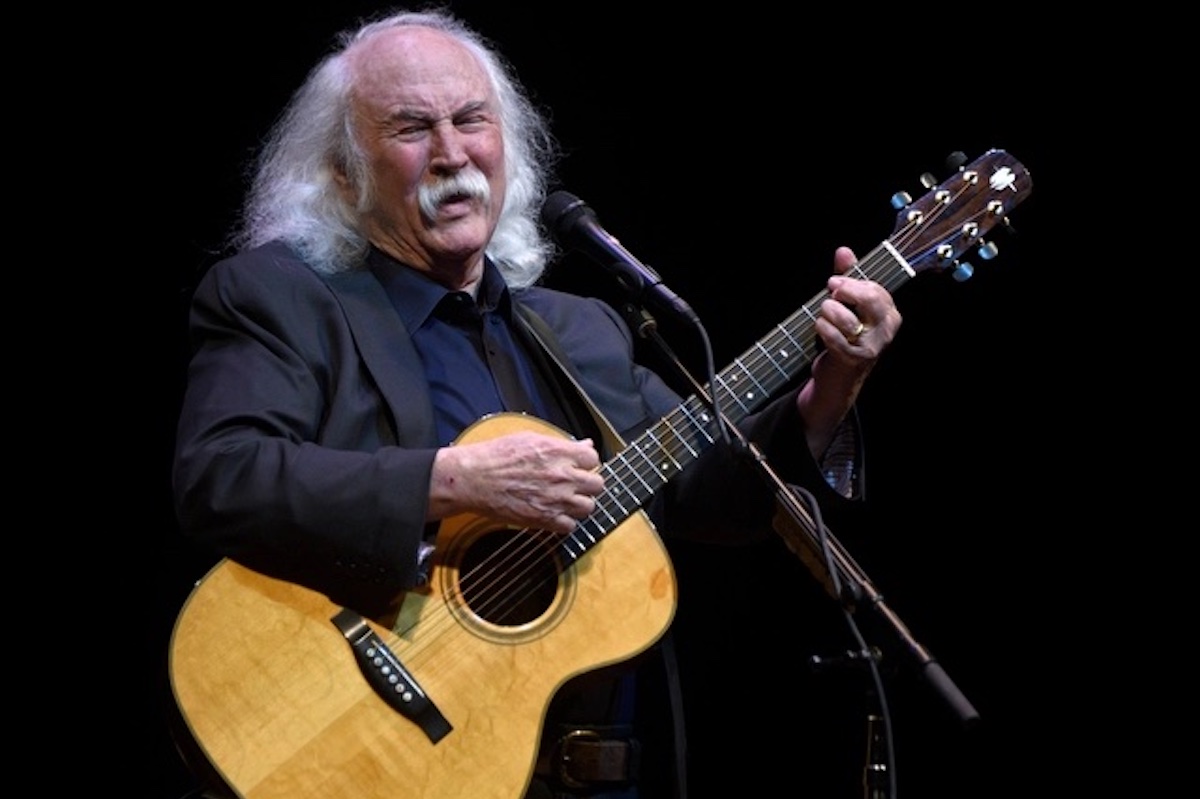Remembering David Crosby’s Name and Legacies
Famed Singer/Songwriter with Deep Santa Barbara Ties Dies at 81

David Crosby has died at 81 after struggling with a long illness. Crosby spent time growing up (and by his account, getting kicked out of schools) in Santa Barbara before returning to live in Santa Ynez Valley with his wife, Jan, and son Django. He performed many times in venues ranging from the seminal 1960s folk club Noctambulist (next to the Lobero) to the Arlington and the Santa Barbara Bowl with the on-again-off-again group Crosby, Stills & Nash (CSN).
Crosby’s long musical path passed through numerous significant bands and eras over the past 50-plus years. Whether with The Byrds, CSN, in partnership with Graham Nash, and as a solo artist, Crosby’s influence was wide-reaching, as an artist who could roam freely between his folk roots, rock, and pop, with shades of jazz and modal musicality in the mix. In the last few years, Crosby had collaborated with the young-ish, popular jazz-pop group Snarky Puppy, live and on record, and released the Crosby solo album Lighthouse on the Snarky record label GroundUP.
He was also known to sometimes be frictional with bandmates and others in his path, causing a final dissolution of CSN in 2016, just as his stint as a founding member of the prototypical folk-rock band The Byrds ended on a sour note. Especially in his reflective later years, Crosby atoned for his abusive nature through his career, appearing in two documentaries screened at the 2019 Santa Barbara International Film Festival (David Crosby: Remember My Name and Echo in the Canyon) in which he referred to his old self as “an asshole.”
In a 2016 interview, the then freshly recharged Crosby spoke to me about his connection to “the muse.” “She’s stopping by a lot,” he laughed. “What has happened with me is that the muse started stopping by so regularly, I felt like I really had to gather myself up and pay attention. I pick up the guitar every day. I work at it every day. I try to make it be the highest priority other than my family — which is my highest priority.
“But aside from that, I’m so grateful for it being this way that I work at it. It has been an incredible ride lately.”
In recent years, while battling ill health, Crosby upped the pace of his creativity in solo mode, releasing new albums, and, locally, showing up for cameos with such artists as Jason Isbell and Becca Stevens and appearing in solo mode at the Lobero Theatre in 2018. A return to the Lobero, timed with the theater’s 150th anniversary, had just been announced.
Crosby’s spotty discography as a solo artist culminated in last year’s For Free. His first album under his name was 1971’s If I Could Only Remember My Name, widely regarded as his personal masterpiece. The title may refer to an Eastern spiritual path or his legendary drug and alcohol problems. Musically, the album reflects not only the artist’s eclectic instincts but also his natural collaborative impulses, with a guest list including Joni Mitchell, Jerry Garcia, Paul Kantner, and other musicians from both the Laurel Canyon scene in Los Angeles and the San Francisco contingent surrounding the Grateful Dead and Santana.
Crosby, a k a “Croz,” had an uncanny way of hovering around the fringes and in many circles of musical culture, and livening up the room.
Support the Santa Barbara Independent through a long-term or a single contribution.



